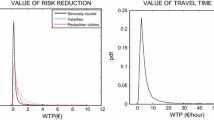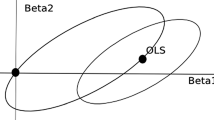Abstract
This paper shows that answers to three related questions on the relationship between car size and safety increase our basic knowledge about driver behavior. The three related questions are: 1) Given a car crash, how does the likelihood that the driver is killed depend on the size of the car? 2) How does the probability of a car being involved in a crash depend on its size? 3) How does the number of driver fatalities per car per year depend on car size? These questions are answered by reviewing a number of published studies performed by scientists at General Motors Research Laboratories. In all studies car size is characterized by the physical variable car mass. In examining the first question it is found that, given a crash, a driver in a 900 kg car is 2.6 times as likely to be killed as is a driver in a 1800 kg car. For the second question, it is found that the accident involvement rate for 900 kg cars is 0.72 times that for 1800 kg cars. By multiplying these two ratios, we obtain an estimate for the answer to the third question, namely, that we expect 2.6 × 0.72 = 1.9 times as many driver fatalities per car per year in 900 kg cars as in 1800 kg cars. This same question is examined directly using fatality and registration data to give a ratio of 1.7. The closeness of this to the previously cited value of 1.9 indicates a fairly consistent overall picture. The 28% lower accident involvement rate for the smaller cars is interpreted in terms of human behavior feedback. The drivers of smaller cars are reducing their driving risk taking, presumably, in part, because of their intuitive understanding that they are more likely to be seriously hurt in a crash.
Access this chapter
Tax calculation will be finalised at checkout
Purchases are for personal use only
Preview
Unable to display preview. Download preview PDF.
Similar content being viewed by others
References
Campbell, B. J. and Reinfurt, D. W. The relationship between driver crash injury and passenger car weight. Highway Safety Research Center, University of North Carolina, Chapel Hill, NC, 1973.
Carsten, O. Use of the nationwide personal transportation study to calculate exposure. University of Michigan, The HSRI Research Review, 11, 1–7, 1981.
Conybeare, J. A. C. Evaluation of automobile safety regulations: The case of compulsory seat belt legislation in Australia. Policy Sciences, 12, 27–39, 1980.
Evans L. Car mass and likelihood of occupant fatality. SAE Paper 820807, Society of Automotive Engineers, June 1982.
Evans, L. Driver Fatalities versus car mass using a new exposure approach. Accident Analysis and Prevention, 16, 19–36, 1984(a).
Evans, L. Accident involvement rate and car size. Accident Analysis and Prevention 16, No. 516, 387–405, 1984(b).
Evans, L. Driver age, car mass and accident exposure—a synthesis of available data. General Motors Research Publication GMR–4806, August 6, 1984(c). Also, Accident Analysis and Prevention, 1986 (in press).
Evans, L. Fatality risk for belted drivers versus car mass, Accident Analysis and Prevention, 1985(a) (in press).
Evans, L. Human behavior feedback and traffic safety, Human Factors, 1985(b) (in press).
Evans, L. Involvement rate in two-car crashes versus driver age and car mass of each involved car. Accident Analysis and Prevention, 1985(c) (in press).
Evans, L., and Wasielewski, P. Serious or fatal driver injury rate versus car mass in head-on crashes between cars of similar mass. General Motors Research Laboratories Publication GMR-4480, September 1, 1983. To be presented to the American Association for Automotive Medicine, Denver, Colorado, ( October 1984 ).
Joksch, H. C. and Thoren, H. C. Car size and occupant fatality risk, adjusted for differences in drivers and driving conditions. The Center for the Environment and Man, Inc., CEM Report No. 4308–754, January 1984.
Lee, M. E. H., Glover, M. F., and Eavy, P. W. Differences in the trip attributes of drivers with high and low accident rates, Society of Automotive Engineers, SAE Paper 800384, included in SAE Special Publication SP–461, Accident Causation, Society of Automotive Engineers, Warrendale, PA 1980.
Negri, D. B. and Riley, R. K. Two car collision study II, Report No. DOT-HS-245-2-478-4, performed by State of New York Department of Motor Vehicles, June 1974.
Peltzman, S. The effects of automobile safety regulation. Journal of Political Economy, 83, 677–725 (1975).
von Buseck, C. R., Evans, L., Schmidt, D. E., and Wasielewski, P. Seat belt usage and risk taking in driving behavior. Warrendale, PA: Society of Automotive Engineers, SAE Paper 800388, included in SAE Special Publication SP-461, February 1980.
Wasielewski, P., and Evans L. Do drivers of small cars take less risk in everyday driving? Risk Analysis, 5 (1) 25–32, 1985.
Wasiewlewski, P. Speed as a measure of driver risk: observed speeds versus driver and vehicle characteristics, Accident Analysis and Prevention, 16, No 2, 89–103, 1984.
Wilde, G. J. S. The theory of risk-homeostasis: Implications for safety and health. Risk Analysis, 2 (4), 209–255, 1982.
Williams, A. F. Nighttime driving and fatal crash involvement of teenagers. Accident Analysis and Prevention, 77, No. 1, 1–5, 1985.
Wolfe, A. and O’Day, J. Fact book on U.S. pedestrian accidents, Report UM-HSRI-81-05. The University of Michigan Highway Safety Research Institute, February 1981.
Woods, D. L. Small car impacts on highway design, ITE Journal, 20–24, April 1983.
Author information
Authors and Affiliations
Editor information
Editors and Affiliations
Rights and permissions
Copyright information
© 1985 Plenum Press, New York
About this chapter
Cite this chapter
Evans, L. (1985). Driver Behavior Revealed in Relations Involving Car Mass. In: Evans, L., Schwing, R.C. (eds) Human Behavior and Traffic Safety. Springer, Boston, MA. https://doi.org/10.1007/978-1-4613-2173-6_15
Download citation
DOI: https://doi.org/10.1007/978-1-4613-2173-6_15
Publisher Name: Springer, Boston, MA
Print ISBN: 978-1-4612-9280-7
Online ISBN: 978-1-4613-2173-6
eBook Packages: Springer Book Archive




